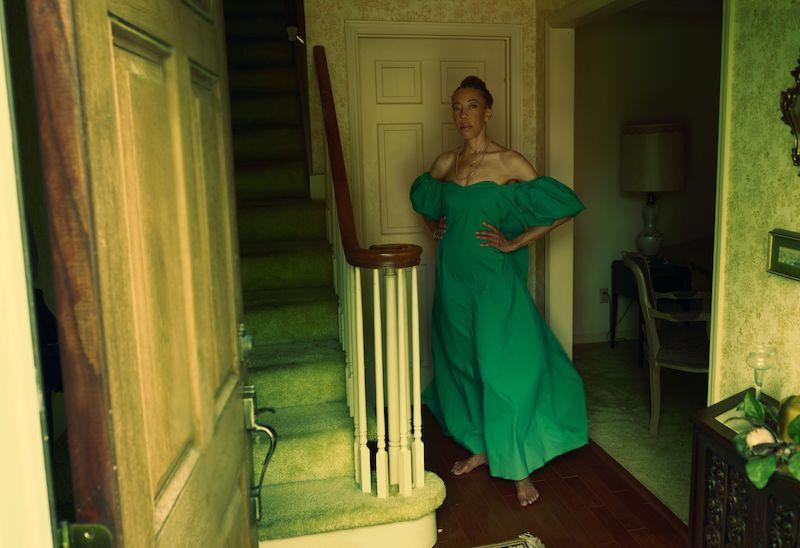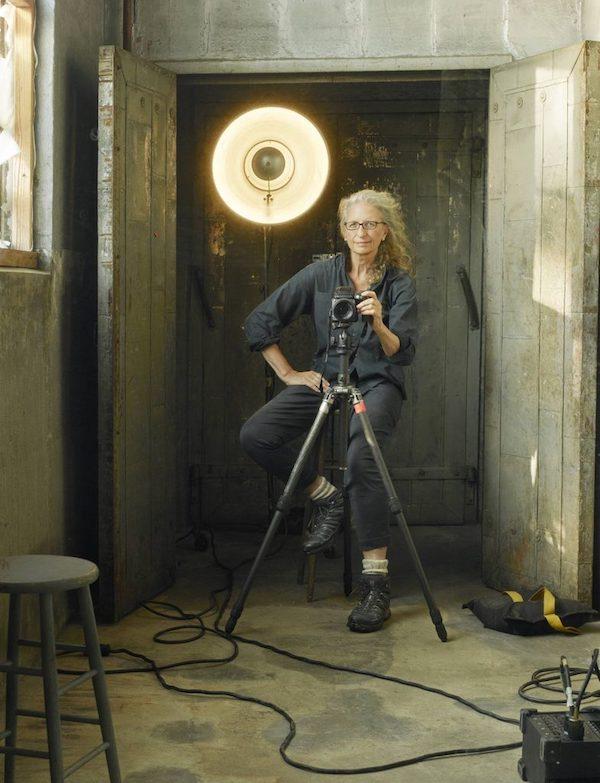An important part of that history began with her challenging move from Rolling Stone where she was accustomed to working alone, to Vanity Fair and later Vogue where she had a whole studio apparatus to contend with. In 1977 Leibovitz had her first fashion assignment, Margaux Hemingway, followed by some of the most seminal images ever to grace the covers of these magazines. Consider Demi Moore, seven months pregnant wearing only earrings on the cover of Vanity Fair. In the preface to her 2021 book, Wonderland, Leibovitz observes, ‘Looking back at my work, I see that fashion has always been there. Fashion plays a part in the scheme of everything, but photography always comes first for me.’ The evocative, cinematic qualities of her fashion work demonstrate her storytelling skills, which are very much akin to those of a feature film director.
The current exhibition includes a new body of 25 works commissioned by Crystal Bridges that are emphatically contemporary, focusing on people and events over the past ten years. The show also functions as a memoir of sorts, allowing Leibovitz to link her portraits to her stories.
“The exhibition does weave thematically through her career,” Alejo Benedetti, Acting Curator, Contemporary Art at Crystal Bridges, told Art & Object in a telephone interview. “But there are constellations of stories, longer narratives that are insightful.” He added, “This is not a retrospective. This is a bold re-examining of the artist’s practice. This is Annie crisscrossing her legendary career in a deeply personal and self-reflective way in order to give a peek into her mind at work, seeing how works speak to each other.”
Her unpretentious demeanor was on display during a talk at the Chicago Humanities Festival in 2021. It was surprising to hear Leibovitz say she still gets nervous considering she has photographed the world’s richest and most powerful people. She shot the final image of the Nixon presidency in 1974 as he boarded a helicopter leaving the White House in disgrace and President Obama nearly 50 years later. “Vogue has a tradition to photograph first ladies right after the election," Leibovitz explained at her Chicago talk. Her portrait of first lady Michelle Obama is one of her favorites. She also photographed Hillary Clinton and Jill Biden. Being selected to photograph one of the most depicted women in the world, Queen Elizabeth II, surprised her. It led to some interesting stories about how power is conferred or taken in portrait photography. Leibovitz discovered that the Queen had her own ideas about how she wished to be photographed.
“I’ve worked with extraordinary actors and models–people whose job was to be photographed,” Leibovitz acknowledged. She said there are compromises to be made when working with subjects “who know what they will and will not do.” Another challenge is taking a portrait of an artist whose career is also making portraits. Two exceptional, recent examples are included in this show.
Artist Cindy Sherman has made a career of photographing herself. But her true identity is always camouflaged with tons of make-up, elaborate costumes, and props. Annie Leibovitz has managed an astounding display of mutual trust between herself and Sherman. Her 2022 portrait shows Sherman sans make-up, pale, Ophelia-like laying in the grass, vulnerable, unadorned. I realized I’d never really seen Sherman’s face. The other artist is painter Amy Sherald who skyrocketed to fame when she painted the portrait of first lady Michele Obama. Sherald appears standing, barefoot, in shadow, in an elegant green gown. The natural light source catches the curve of a staircase and seems to be coming from an open front door where the photographer might be standing. This enigmatic image is pregnant with history.
Following the stint at Crystal Bridges, Annie Leibovitz at Work will travel to four additional venues: The Mint Museum in Charlotte, NC; Crocker Art Museum in Sacramento, CA; Frist Art Museum in Nashville, TN; and The Wichita Art Museum in Wichita, KS.






























